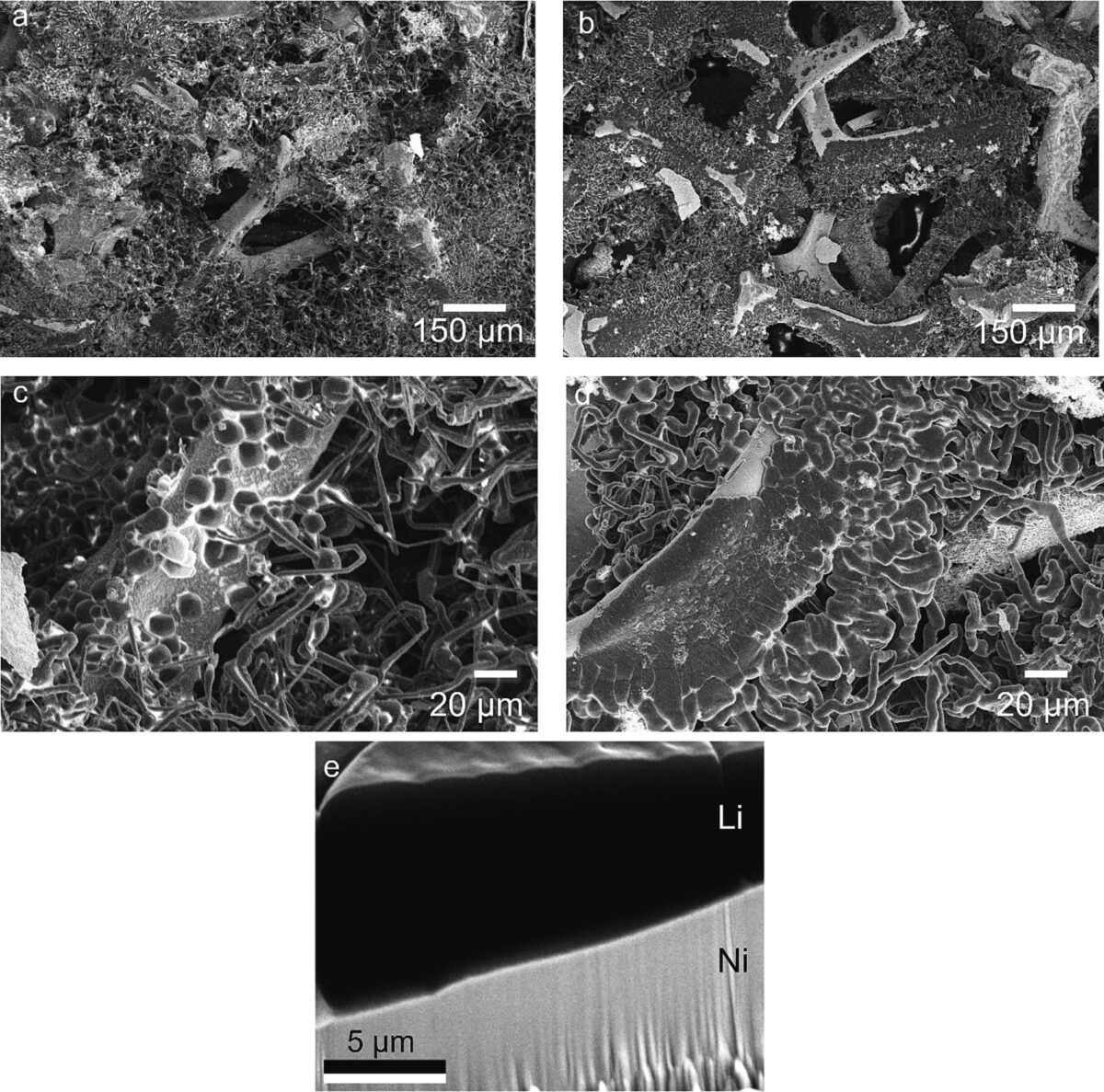Redox flow batteries that incorporate solid energy-storing materials are attractive for high-capacity grid-scale energy storage due to their high theoretical energy densities. However, their practical implementation is held back by low rate capability.
Now, a group of researchers led by Albuquerque-based Sandia National Laboratories have demonstrated a lithium-sulfur redox mediated flow battery that utilizes a high surface area lithium scaffold to enable even 10 times faster cycling.
In their previous research, the group had designed a redox mediated lithium-sulfur hybrid flow battery containing a lithium metal anode and sulfur in the catholyte reservoir. However, they had observed that the charge rate was limited by dendrite growth on the lithium anode.
This issue, which is common to many lithium-metal-based redox flow batteries, imposes considerable design constraints. Namely, the limited charge rate increases the minimum required electrochemical cell size for a given power output and drives system costs upwards.
To address these limitations, the researchers have replaced the planar lithium anode in redox mediated lithium sulfur redox flow batteries with a high surface area scaffold, which enabled 10 times faster cycling, up to 10 mA cm−2, compared to the same systems with planar anodes, without short circuit or voltage instability.
In their latest study, the researchers first tested the high surface area nickel foam in lithium/lithium symmetric cells and then in a full prelithiated redox flow battery.
They have further improved the cell performance with the addition of zinc oxide to the nickel foam, which promotes better lithium wetting, improving the Coulombic efficiency of the cells.
Finally, they demonstrated that the use of the zinc oxide-nickel foam scaffold also allows the redox flow batteries to be built in an “anode-less” configuration, improving the safety and decreasing the cost to assemble and ship a battery.
Importantly, these improved cells have also shown scalability. Namely, when the sulfur loading is increased from 2.4 to 5 mg cm−2 the capacity is also increased. In fact, with loadings at 5 mgS cm−2 the power density of their redox flow battery was over 20 Wh L−1, making it comparable to vanadium redox flow batteries.
“Having addressed the limitations of the Li anode, there is now further room for improvement of the system by investigating kinetic limitations of the Li-S reaction and capacity fade caused by polysulfide shuttling,” the researchers write. “The fast cycle rate and scalability of the system shows that it is viable for grid scale energy storage in the future.”
Their findings are discussed in “Fast cycling of ‘anode-less' redox-mediated Li-S flow batteries,” published in the Journal of Energy Storage.
This content is protected by copyright and may not be reused. If you want to cooperate with us and would like to reuse some of our content, please contact: editors@pv-magazine.com.




1 comment
By submitting this form you agree to pv magazine using your data for the purposes of publishing your comment.
Your personal data will only be disclosed or otherwise transmitted to third parties for the purposes of spam filtering or if this is necessary for technical maintenance of the website. Any other transfer to third parties will not take place unless this is justified on the basis of applicable data protection regulations or if pv magazine is legally obliged to do so.
You may revoke this consent at any time with effect for the future, in which case your personal data will be deleted immediately. Otherwise, your data will be deleted if pv magazine has processed your request or the purpose of data storage is fulfilled.
Further information on data privacy can be found in our Data Protection Policy.